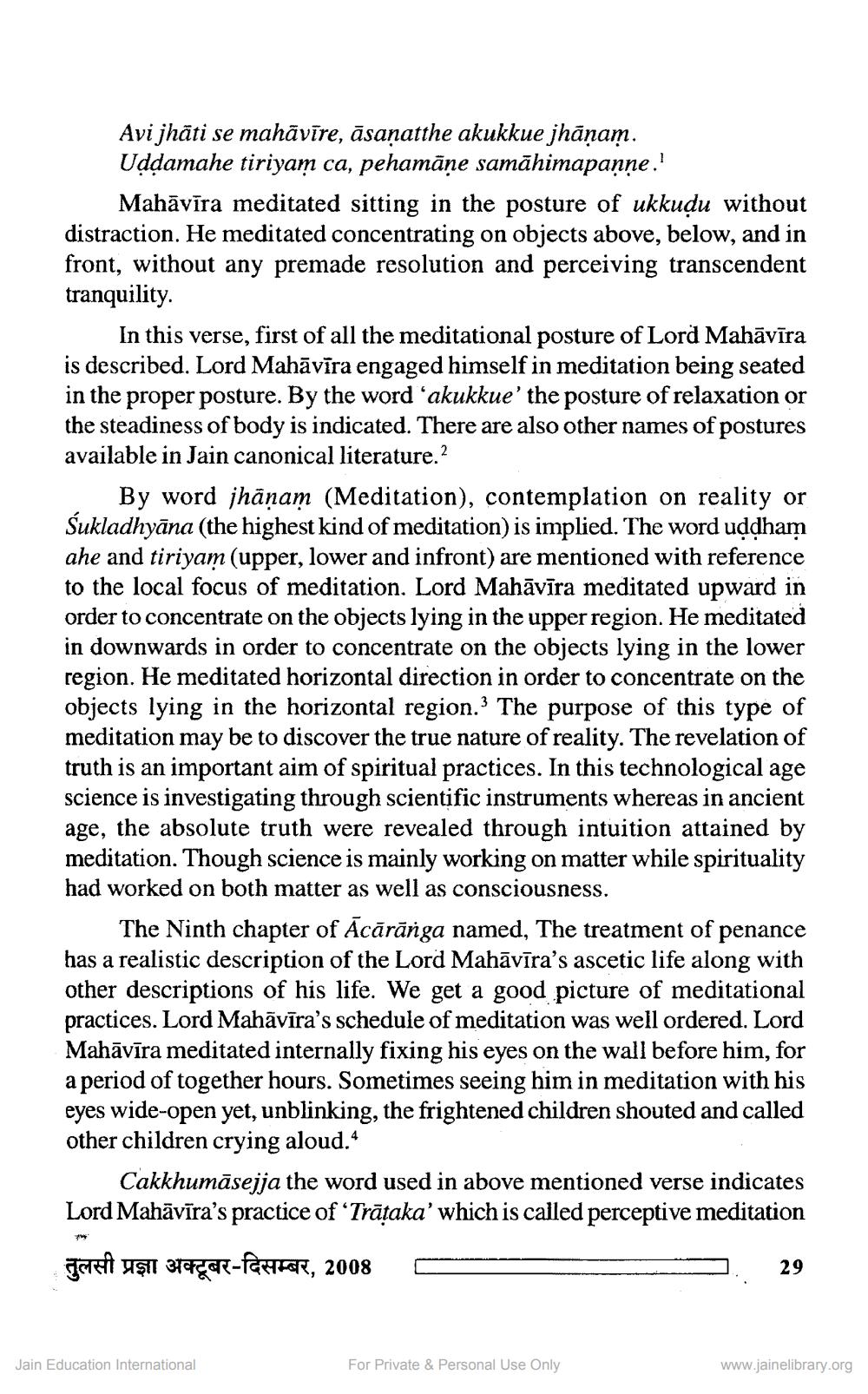________________
Avi jhati se mahāvīre, āsaṇatthe akukkue jhāņam. Uddamahe tiriyam ca, pehamāṇe samāhimapanṇe.'
Mahāvīra meditated sitting in the posture of ukkuḍu without distraction. He meditated concentrating on objects above, below, and in front, without any premade resolution and perceiving transcendent tranquility.
In this verse, first of all the meditational posture of Lord Mahāvīra is described. Lord Mahāvīra engaged himself in meditation being seated in the proper posture. By the word 'akukkue' the posture of relaxation or the steadiness of body is indicated. There are also other names of postures available in Jain canonical literature.2
By word jhaṇam (Meditation), contemplation on reality or Śukladhyāna (the highest kind of meditation) is implied. The word uddham ahe and tiriyam (upper, lower and infront) are mentioned with reference to the local focus of meditation. Lord Mahāvīra meditated upward in order to concentrate on the objects lying in the upper region. He meditated in downwards in order to concentrate on the objects lying in the lower region. He meditated horizontal direction in order to concentrate on the objects lying in the horizontal region.3 The purpose of this type of meditation may be to discover the true nature of reality. The revelation of truth is an important aim of spiritual practices. In this technological age science is investigating through scientific instruments whereas in ancient age, the absolute truth were revealed through intuition attained by meditation. Though science is mainly working on matter while spirituality had worked on both matter as well as consciousness.
The Ninth chapter of Acārānga named, The treatment of penance has a realistic description of the Lord Mahāvīra's ascetic life along with other descriptions of his life. We get a good picture of meditational practices. Lord Mahāvīra's schedule of meditation was well ordered. Lord Mahāvīra meditated internally fixing his eyes on the wall before him, for a period of together hours. Sometimes seeing him in meditation with his eyes wide-open yet, unblinking, the frightened children shouted and called other children crying aloud.*
Cakkhumāsejja the word used in above mentioned verse indicates Lord Mahāvīra's practice of 'Traṭaka' which is called perceptive meditation
तुलसी प्रज्ञा अक्टूबर-दिसम्बर, 2008
Jain Education International
For Private & Personal Use Only
29
www.jainelibrary.org




